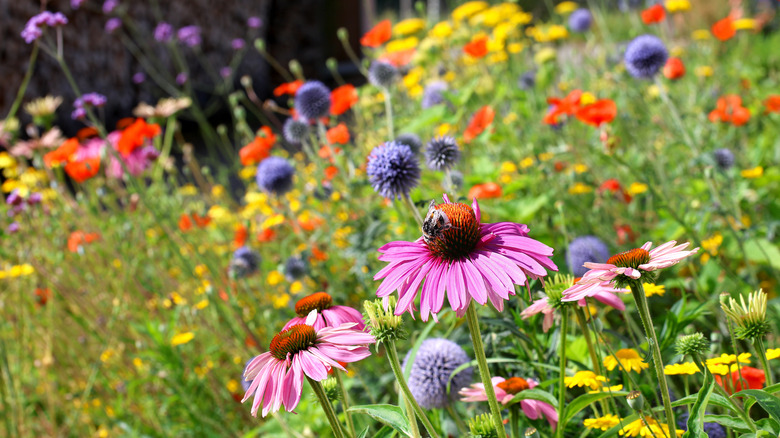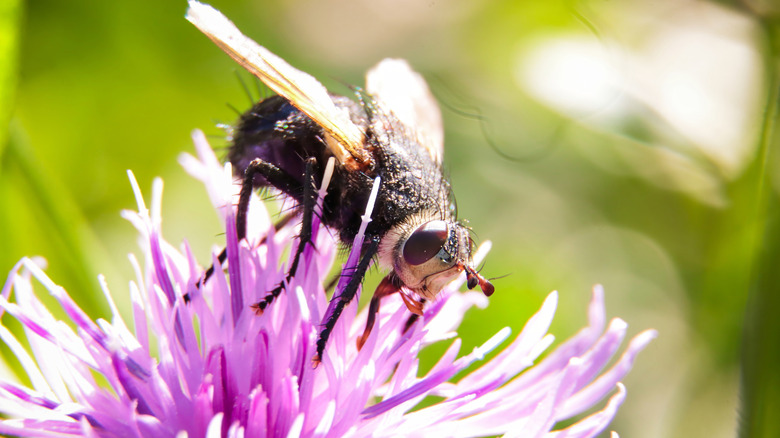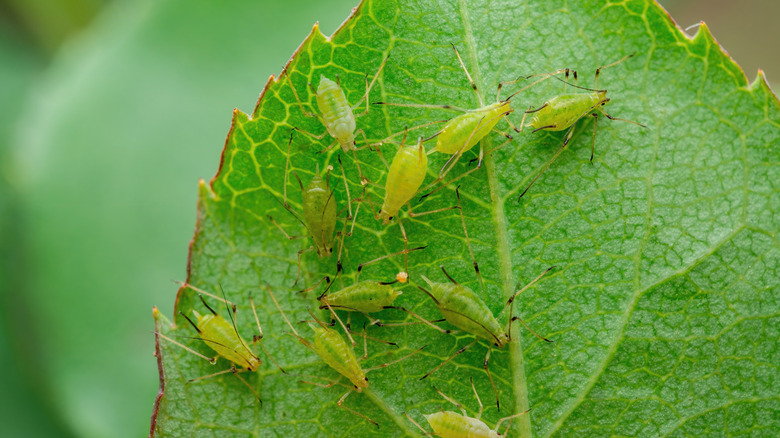The Flying Insect You Should Avoid Killing At All Costs (& It's Not A Wasp Or Bee)
Your first instinct when you spot a buzzing insect nearby is often to swat at it, but not every bug is a foe. Some are friends and worth a second look. Consider the hover fly, a tiny but mighty bee mimic. One of the insects you should avoid killing at all costs, hover flies offer valuable benefits to gardens as both pollinators and natural pest controllers.
Hover flies, also known as flower flies or syrphid flies, get their name from their ability to hover in place as they fly. They might look like a typical bee or wasp, complete with yellow bands, but they're harmless. They don't sting, bite, or act aggressively toward humans. Some mistake them for their stinging cousins and may act out of fear, killing them. One way to determine the difference between these insects is by counting their wings, if possible: these beneficial flies have only two, while bees and wasps have four. If you're close enough to a flower fly, you may also notice their large eyes, which are similar to those of other flies, and short antennae.
With over 900 hover fly species in North America, these beneficial insects are often found around flowers, wooded areas, prairies and other habitats. Sometimes they may even land on you. If they do, don't panic. As gross as it may sound, a flower fly isn't interested in you. It just wants your sweat, which is a perfect source of salt and moisture. So resist your urge to swat at these harmless bugs, and by doing so, you'll help support the local ecosystem.
Why you shouldn't kill a hover fly
Syrphid flies are helpful pollinators, second only behind our bee friends. Like bees, they collect pollen from flowers on their legs and parts of their bodies, inadvertently transferring it as they fly to their next floral destination. This isn't an ordinary feat, either, as academic research shows they visit 72% of the global crop supply. They also travel thousands more miles than bees, even migrating across regions, supporting many ecosystems along the way. Unfortunately, hover flies have very short life spans, often up to one month as adults, which makes protecting them critical.
If you see hover flies in your garden, let them be. Instead of swatting them, welcome them. You can attract these good insects into your yard and garden by planting flowers they prefer. Unlike planting for bees, where you might choose tubular options, flower flies need flowers with easily accessible nectar. Bees have tongues they use to reach deep into flowers, but these insects have a sponge-like mouth designed to sip nectar from shallow blooms. Plants like fennel, sweet alyssum, and dill are great choices.
Don't let the little helpers get dehydrated, either — use an in-garden water station for bees so your hover fly visitors can drink in comfort between their visits to your flowers. Another way to encourage them to stick around is by creating an ideal habitat — a hover fly lagoon. Some species lay their eggs in water, so creating a safe place for them to land is beneficial. Use a drink container or small pot, filling it with water, then top it with organic material, such as soil, leaves, branches, and grass clippings.
Other reasons to avoid killing hoverflies
Adult hover flies are beneficial to your flowers, but the young are the best friend of anyone plagued with aphids or other plant pests. While the adults gather pollen, the larvae have a hearty diet of aphids. The female fly lays her eggs — up to 100 in her lifetime of one month — often on plant leaves teeming with sap-sucking insects that can destroy your crops and landscaping. As the larvae hatch, they emerge as maggots, and they quickly consume their aphid prey. One larva can consume up to 400 aphids, making a significant difference for many crops as an eco-friendly pest control method. According to Cornell University, a large larvae group can possibly reduce aphid populations by 70% to 100%. The young hover flies will also eat other destructive pests, including mealybugs, thrips, and leafhoppers.
Avoiding insecticides that may target these bee mimics is best if you want a flourishing, healthy garden. It may be annoying seeing these flies buzzing around, but their short lifespan brings long, lasting benefits as they pollinate plants and eradicate pests. Give them a welcoming habitat, water, and abundant food, and you'll see the difference in your plants. You'll then know a healthy, balanced ecosystem is worth the occasional flower fly landing on you or flitting in your face.


